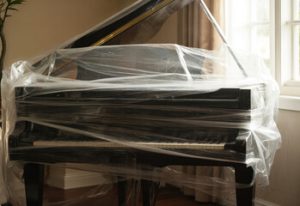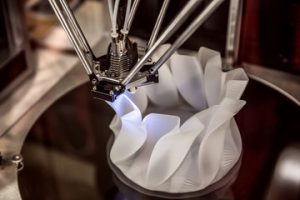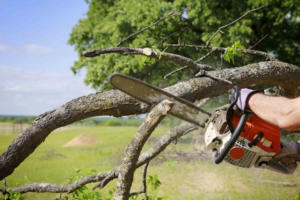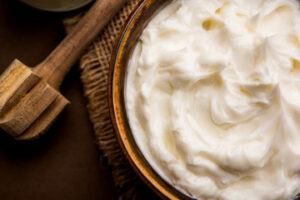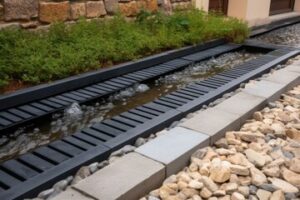Pomsky is a hybrid breed that looks like a smaller version of either a Pomeranian or a Siberian Husky. These small dogs typically weigh between 20 and 30 pounds.

Their thick, fluffy double coats can be short or long, and they usually have the trademark husky eyes. Each puppy inherits a unique blend of traits from its parents.
When Buzzfeed inadvertently helped create the Pomsky in 2011 by posting a fake article featuring a Pomeranian-Husky hybrid that went viral, it didn’t take long for breeders to realize there was demand for this designer dog. While natural breeding between the two breeds would be impossible due to their size difference, artificial insemination was used to successfully produce the first litters of Pomsky puppies. The result is a fluffy bundle of energy with the striking appearance of both parent breeds and an innate sense of independence.
Pomskies are a medium-sized breed, but their size will vary depending on the dominant genetics of the father and mother. This means that some puppies will retain a heavier Husky build while others may appear more Pomeranian-like in terms of size and weight. Either way, these pups are incredibly attractive with thick double coats that can be short or long in length and a variety of color options, including the classic black and white or multicolored hues of the Siberian Husky. Their eyes are another highlight, and can range from a light hazel to the trademark piercing blue of the Husky.
Aside from their striking looks, Pomskies possess a number of traits that make them a popular choice among dog lovers, including the ability to be very playful and energetic, a tendency to bond closely with their families, and an inherent sense of independence. These qualities make them an excellent companion for active families or singles looking for a cuddle buddy.
As with any breed, however, it’s important for prospective owners to do their research to ensure they are working with a reputable breeder or are adopting from a shelter. Backyard breeders and puppy mills often prioritize profit over the health, temperament, and well-being of the dogs they produce, and can introduce serious issues into a Pomsky’s life from birth.
As is the case with any mixed breed dog, Pomskyes are at a higher risk of developing health concerns that are unique to their hybrid background. They can be prone to allergies and food intolerances, and may experience symptoms such as itching that leads to excessive chewing, bald spots, sneezing, and difficulty breathing. For this reason, it is crucial for prospective Pomsky owners to work with a veterinarian and keep up-to-date on their puppy’s vaccination schedule and health care regimen.
Health Concerns
Pomskies are adorable, playful crossbreed dogs that have become increasingly popular in recent years. However, like all dogs, they have certain health concerns that you should understand before adopting.
As a hybrid dog, the Pomsky is not recognized by the American Kennel Club (AKC). However, responsible breeders will provide pedigree papers to verify their pups are healthy and up to the Pomsky standard. A good way to find a reputable breeder is by asking for a vet reference or calling the breeder’s veterinarian. They can walk you through the tests and screenings the breeder has performed on their dam, sire and puppies.
Intestinal worms are common in all dogs and can cause serious health problems if left untreated. To prevent these problems, ensure that your Pomsky puppy is dewormed monthly until they are 6 months old, then two or three times a year once they are adults.
Allergies are a common problem in Pomskies and can result in itchy, itchy skin; ear infections; hair loss; or gastrointestinal issues. Luckily, these allergies are treatable with the proper medication.
Another common issue is hip dysplasia, which occurs when the ball-and-socket joint fails to grow correctly and at the same rate. This can lead to permanent damage and arthritis in the future.
As Pomskies are such loving and playful pups, they tend to bond closely with their families. This affection can make them protective of their owners and may cause them to be skittish around small children. It is important to socialize your Pomsky from a young age and teach them basic obedience commands.
Because they are so spirited, Pomskies will often try to defend their territory and loved ones from intruders or other animals. This is why it is important to teach them basic commands as well as leash training and housetraining. You also need to be a confident alpha and make sure your Pomsky knows that you are the pack leader.
Because Pomskies have such a playful, active lifestyle, it’s essential to take them to the veterinarian for regular checkups. The vet will examine your puppy’s eyes, ears and coat for signs of infection and other health concerns. These visits will help to catch health problems early so that your pet can be treated promptly.
Training & Socialization
Pomskies are smart and eager to please, which makes them easy to train. While a responsible breeder will have introduced their puppies to basic commands and socialization, it is up to the owner to teach them house manners and how to walk on a leash. It’s best to start these lessons while the puppy is still a pup, as it will be much easier for them to grasp.
As with any dog, a well-trained Pomsky is a better behaved and happier dog. A Pomsky who is not properly trained may become territorial, aggressive, or even destructive. This is why it’s important for new owners to work with a trainer and enroll their puppy in obedience classes.
A Pomsky’s distinctive look and intelligence make them a popular designer dog, but they are still relatively new to the world of canines. It’s important for prospective owners to do their research and find a reputable breeder who practices ethically and prioritizes the health and happiness of their dogs.
Some backyard and puppy mill breeders may exploit the popularity of Pomskyes to increase their profits, which can lead to poorly bred dogs with health and temperament concerns. Responsible breeders will conduct extensive genetic testing to screen for health conditions and ensure that their puppies meet the breed standard. They will also be knowledgeable about the F1, F1b, and F2 generations of Pomskyes, which affect various appearance traits including size variations, coat color, and eye color.
Like any small breed, a Pomsky is prone to some common issues, including dental problems and ear infections. As a result, it is important for owners to brush their Pomsky’s teeth regularly and give them a paw massage once a week. They should also be groomed on a regular basis, which will help manage shedding and keep their nails healthy.
Lastly, as with any breed, it’s important for Pomskies to be on flea and tick prevention treatments. Keeping up with these routine treatments will prevent parasites from infecting your Pomsky and will help you spot potential problems early on, such as ear infections or dental trouble.
Care & Feeding
As an energetic breed, Pomskies need plenty of exercise and playtime. This will help minimize their natural tendency to zoom around the house and excessive barking, and will keep their minds and bodies stimulated. Regular grooming and dental hygiene are also key to keeping these smart, healthy dogs happy. Ideally, you should choose a groomer that specializes in small-breeds or even Pomskyes specifically to reduce the time spent on grooming and brushing. A reputable groomer will know how to handle this thick, fluffy breed’s fur, and can trim their nails to avoid overgrowth that could impact their gait or cause discomfort.
While this new mix is gaining in popularity, it’s important to take your time finding the right dog for you and your family. Look for a reputable breeder who can provide you with transparent information about the health and history of the puppy’s parents. Also, it’s a good idea to visit the breeder’s facilities to assess their living conditions and behavior of the puppies.
If you’re looking to adopt instead of buy, shelters are a great resource for finding a Pomsky. Many rescue groups across the country specialize in helping Pomeranians, Siberian Huskies, and mixes of these two breeds. While adoption may come at a lower cost, it will still require some initial financial investment to cover vaccinations, microchipping, general vet care and other initial expenses.
Like any other dog, your Pomsky will need to have routine veterinary care to stay healthy and happy. This includes a full physical exam, teeth cleanings and dental exams, vaccinations and boosters, and a regular regimen of preventative care such as flea and tick prevention and heartworm medication.
As with any dog, it’s important to make sure your new Pomsky has proper pet insurance to protect against unexpected medical bills and other unforeseen emergencies. Also, be sure to budget for additional costs that will come up as your puppy grows up, such as grooming, boarding, training classes and food. You can minimize these expenses by shopping around and finding the best deals on high-quality food, treats and other dog supplies.
